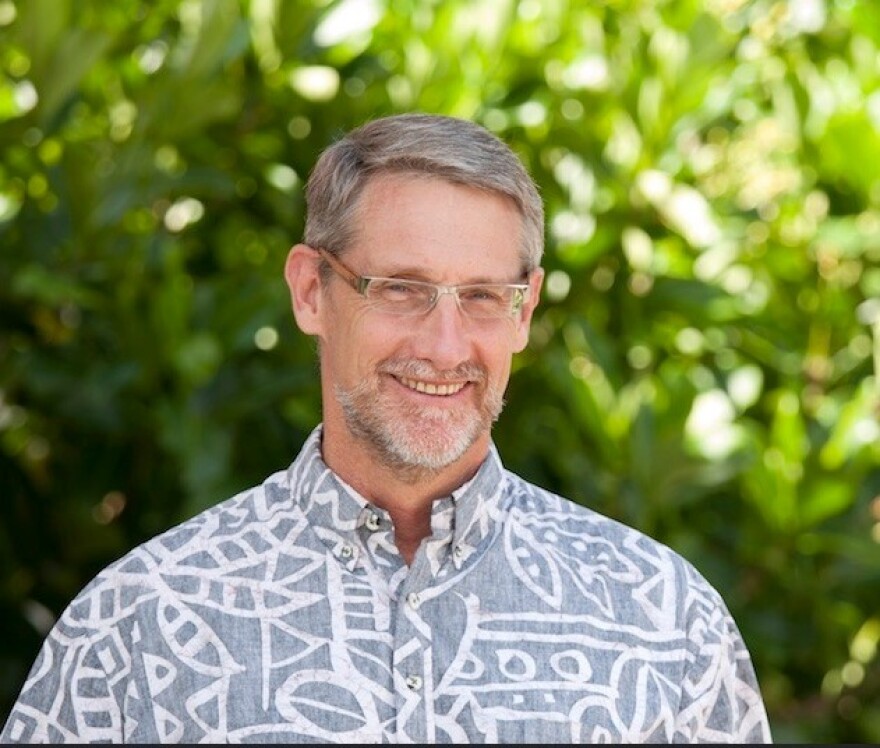New research on the origins of the Hawaiian language is stirring debate over the long-held theory in Polynesian migration that the islands were settled from Sāmoa.

A Big Island Hawaiian language professor uncovered linguistic evidence for a new theory – that Hawaiʻi’s first inhabitants may have migrated from a small chain of coral atolls closer to home.

For some 50 years, conventional understanding of Polynesian migration to Hawaiʻi was that the islands were settled from Sāmoa by way of the Marquesas more than 2,000 miles south of here. But UH Hilo Linguistics Professor William “Pila” Wilson says his research reveals a new theory.

“Ua ʻike wau holo mai kēia poʻe mai kēia mau outalia ʻo Takuu mā holo pololei i ka hikina i kēia mau mokupuni kuaʻau, liʻiliʻi. ʻO ia kēlā mau mokupuni Phoenix, Line, a me Nuʻuhiwa ʻo ia ka home mua loa o nā Polynesia Hikina kahiko.”
Wilson says he found that East Polynesia settlers originated from small Polynesian outlier islands such as Takuu. They sailed directly east to the Phoenix, Line, and Marquesas Islands, before migrating throughout East Polynesia.
These Central Northern Polynesia Outliers are located just off the east coast of the Solomon Islands, and include Takuu, Nukumanu, Nukeria, and Luangiua atolls. Wilson proposes the outliers sailed from here to a chain of coral islands and atolls about 1,200 south of Hawaiʻi.
Wilson’s research, published this summer in the journal Oceanic Linguistics, lays out a step-by-step development of East Polynesian languages – including Hawaiian – from ancestral languages spoken in the outliers.
“ʻO ka poʻe o ka ʻākau o ka paeʻāina Line Islands ʻo ia nā kūpuna o ka ʻōlelo Hawaiʻi, ka poʻe o nā Line Islands o ka hema ʻo ia nā kūpuna o ka ʻōlelo Tahiti, Rarotonga, a me ka Māori o Aotearoa. A ʻo Nuʻuhiwa ʻo ia ka poʻe kupuna o Rapa Nui.”
Wilson says the people of the Northern Line Islands (including Teraina Island and Kiritimati Atoll) are the ancestors of the Hawaiian language. Those from the Southern Line Islands are the ancestors of Tahitian, Rarotonga, and Maori languages. And the Marquesas people are the ancestors of Rapa Nui’s language.
Wilson first proposed this theory in 1985, but there were doubts that atolls could be sources of major populations. UH Mānoa linguistics professor and Austronesian language expert Bob Blust admits he only recently came to accept Wilson’s theory after examining the evidence.

“What he's done is show that there are certain changes that are shared exclusively by languages within Eastern Polynesia. And not just within Eastern Polynesia as a whole, but he's got a new subgrouping of the Eastern Polynesian languages within Eastern Polynesia,” says Blust, “You’d have to find a body of evidence that’s just as strong as what he’s presented now, and its pretty strong.”
Wilson’s latest research identifies more than 200 linguistic changes that are shared exclusively by these Polynesian outlier islands and East Polynesia, but not Sāmoa.
Matthew Spriggs, Emeritus Professor of Archaeology at Australian National University, says Wilson’s research supports archaeological evidence on material culture and migration patterns in the Pacific.
“The great thing about it is that some of the crucial islands which are important here these Polynesian outliers, no archeology has been done there,” says Spriggs, “So every keen young archaeologist I’ve been meeting, I've been telling them to get over to some of these outliers.”
And Wilson says time is of the essence. Rising sea levels could force the inhabitants of these low-lying atolls to flee their homeland, and in the process, risk losing the ancestral language of all of East Polynesia.




